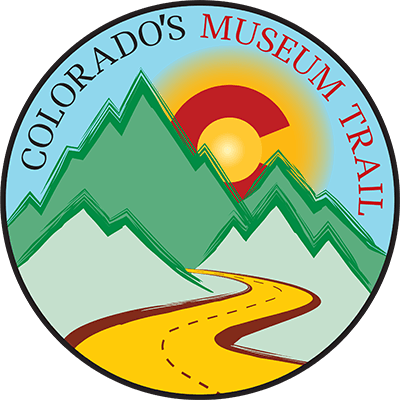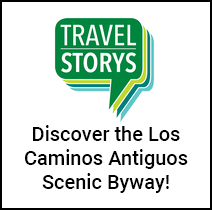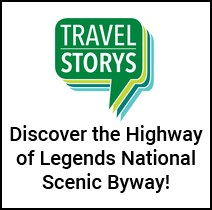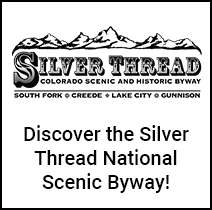LETTER FROM MR. CHARLES W. MC CLANANHAN
Published in the National Intelligencer [Washington, D.C.], November 7, 1853
The letter below is from Charles W. McClanahan to Hon. T.H. Benton, describing the Trail and McClanahan's travel across the West. This letter has answered many questions for researchers, and at the same time has raised additional questions.
Fort Massachusetts [NM], August 28, 1853
Hon. T. H. Benton:--
Dear Sir:
Knowing that you feel interested in the middle route for the great Pacific Railroad, and believing that any information in regards to it would be acceptable, no mater how humble the source from which it comes, I have determined to state what I know about it. This information is from traveling the route just behind Captain Gunnison.
I left Virginia the first of April, went to Missouri and Illinois to purchase sheep for the California market. After purchasing, I started to take them by Salt Lake, the Humboldt River, &c., feeling assured that I would have to winter at Salt Lake. I had gotten the sheep as far as St. Joseph’s, [Missouri] Having some business in St. Louis, I met with Captain Gunnison, and learned from him that there was a better route by way of Utah Lake, and that he was going to open it, and that, from what he knew about it, it would be much better for me to take it. After thinking a good deal over it, I determined to take it, as there was a very large number of stock on the old route, and a good prospect of getting to California this season.
I read you address with a great deal of interest; and feeling assured these statements about the route could be relied on, I left Missouri at Westport, on the 18th of June, with a large number of sheep [2,000 head] and some [3-4 hundred head of] cows - - Mr. Crockett, of Virginia, a partner with me. At Westport, I met with the two Mr. Ross’s, of Iowa, with their families, going the old route; they also determined to accompany me the new route. After traveling a few days, I fell in with the two Mr. Burwell’s, of Franklin City, Virginia, with a large number of cattle, who also were persuaded to join me.
We traveled the Santa Fe [Trail] road twenty-five miles above Bent’s Old Fort, and crossed the Arkansas River at the mouth of Apispah [Apispah River] Creek, crossing over the Huerfano, up that stream about twenty miles, and crossing the Sierra Blanca [Sangre de Cristo] Mountains through Captain Gunnison’s [Sangre de Cristo] Pass, about twelve miles south of Leroux’s Pass to this fort. The distance given by Captain Gunnison is 693 miles from Westport, Missouri.
I traveled over the mountains of Virginia, Pennsylvania, and Tennessee, over several of the passes of the Sierra Nevada in California, and I have never seen a better or more easy Pass for carriages and wagons than the one found by Captain Gunnison, through the Sierra Blanca [Sangre de Cristo Mountains] just opposite to Fort Massachusetts, and distant from it fifteen miles. I traveled the old route to California in 1849, and can speak of the two routes from actual experience, having gone over both with wagons. I look upon this route as far superior, and feel confident that as soon as it is known it will and must be the great thoroughfare from the Atlantic to the Pacific.
On this route, there is an abundance of grass and water, so much that stock will travel and keep fat; the large majority of our sheep are as fat as any mutton in the Philadelphia or Baltimore market, and a very large number of Mr. Burwell’s cattle are fine beef; and I have never seen any stock, after having traveled so far, look half as well.
Both of the Mr. Ross’s have carriages, and as yet nothing has in the least given way. I can say without fear of contradiction that this is one of the finest natural roads in the world, combining everything necessary to sustain stock; and I am confident that, if its advantages are fully made known to Congress, it will be adopted for the great Pacific Railroad. One this line, almost the entire route can be settled; as all the land from Missouri to Bent’s Fort is rich and very fertile, equal to the best lands of Missouri and Illinois, and no land can beat the Sierra Blanca [Sangre de Cristo Mountains] for grass; even to the very summit it stands as thick as the best meadows; many acres would mow at least four tons per acre.
Then comes the large and beautiful valley of San Luis, said to be one of the most fertile in New Mexico (now Colorado); indeed, fine land is upon the whole route, and the climate such that stock can live all winter upon the grass.
I will here state the route I think best for emigrants to travel: Leave Westport, Missouri, take the road to Uniontown, then to Fort Centre, then take Captain Gunnison’s trail, which leads from the Kansas to the Arkansas, near the mouth of Walnut Creek, up the Arkansas above Bent’s Old Fort, thirty-two miles; then up the Huerfano, through Captain Gunnison’s Pass to Fort Massachusetts; then to Little Salt Lake Walker’s Pass, Sierra Nevada; then down the valley of the San Joaquin to Stockton or San Francisco.
There are settlements at different points all along this route, where emigrants can get supplies, none farther apart than two hundred miles. After leaving Missouri, you pass first Council Grove, next the Fort on Walnut Creek, next Green Horn, next Fort Massachusetts, Little Salt Lake, Santa Clara, Vegas de Santa Clara; at each of these supplies can be had.
I feel confident, when Captain Gunnison makes out his report, that this route will be adopted. The pass through the Sierra Blanca [Sangre de Cristo Mountains] is so low and gradual that a railroad can be made over it, and the grade will not exceed fifty feet to the mile. Captain Gunnison is doing his whole duty, and well deserves the thanks of the whole country, for the very well laid out road through this almost unexplored country. I will write you again after getting through to California, and describe the rest of the way.
Yours respectfully,
Charles W. McClanahan



